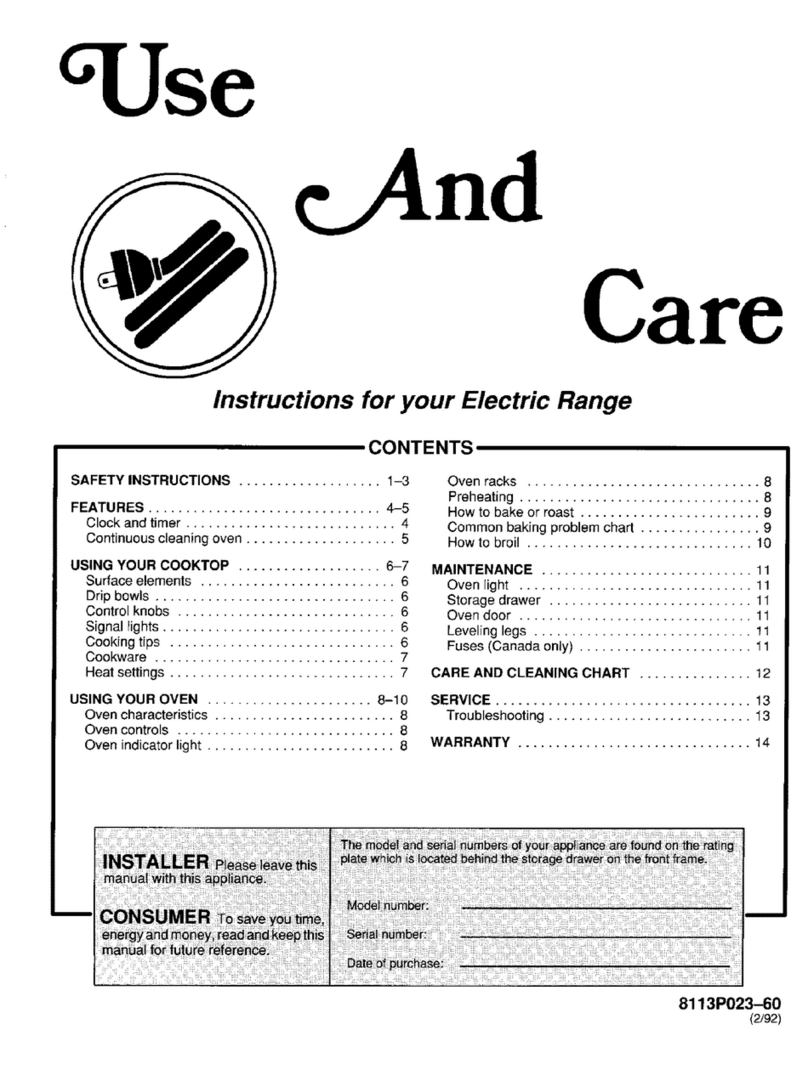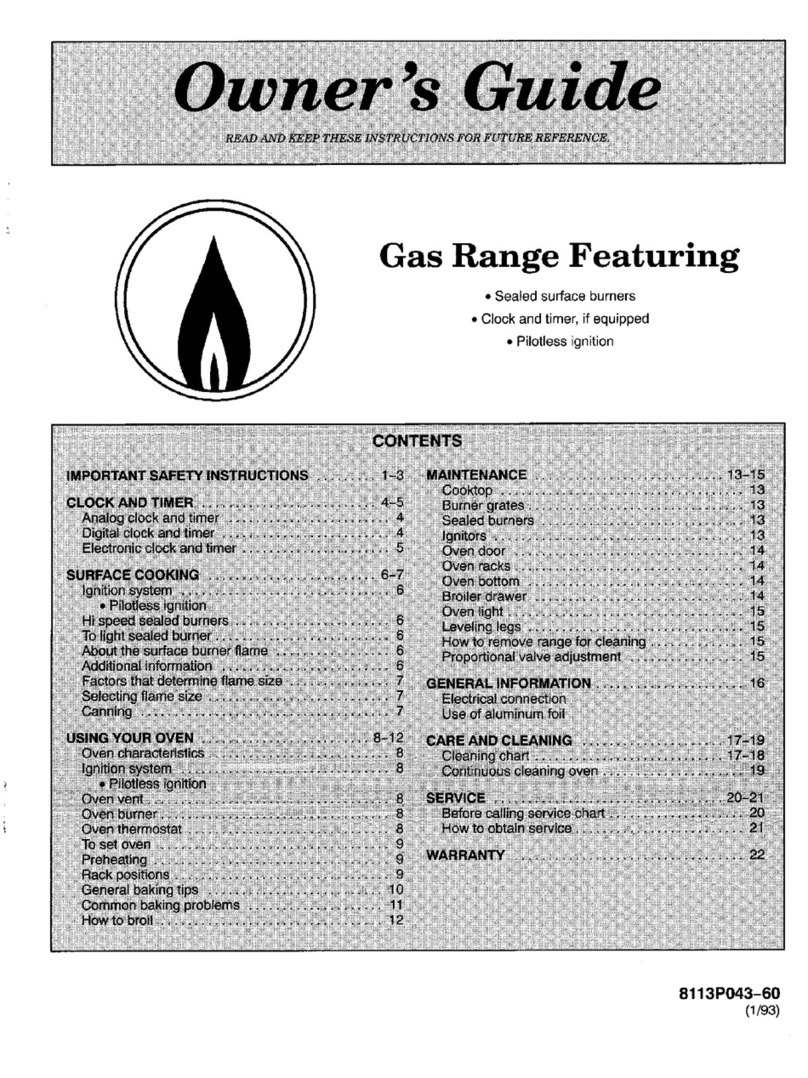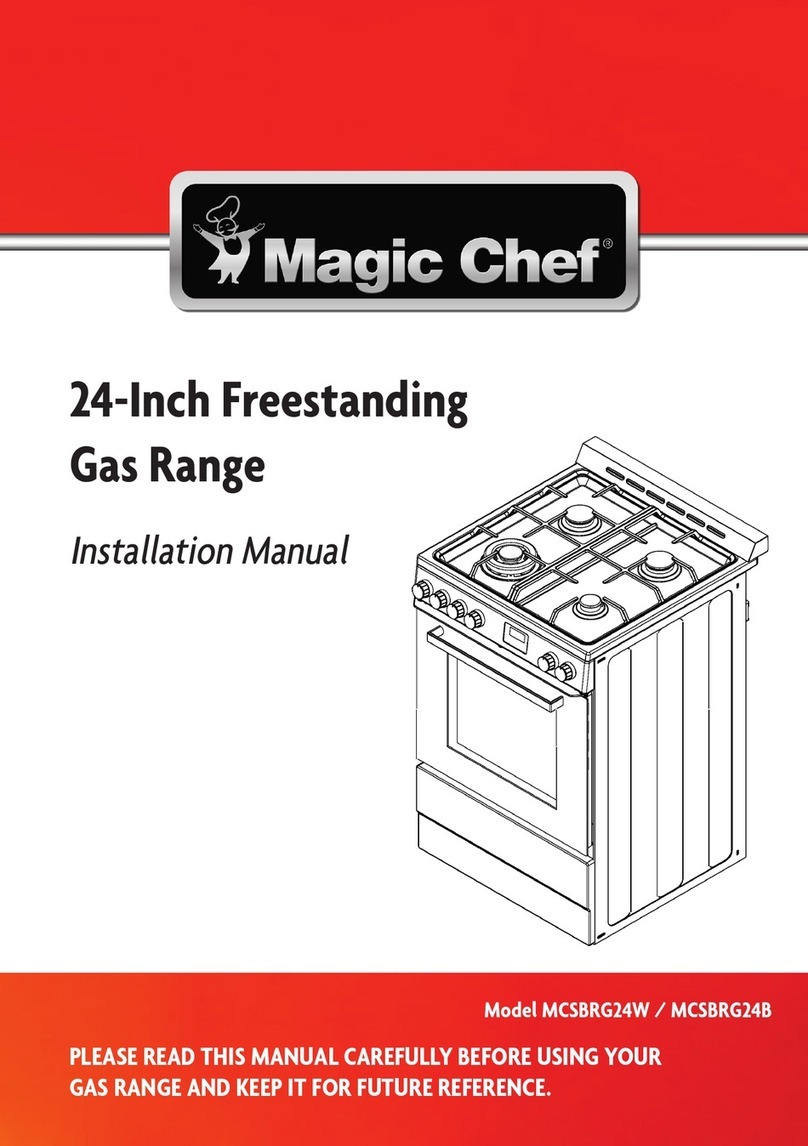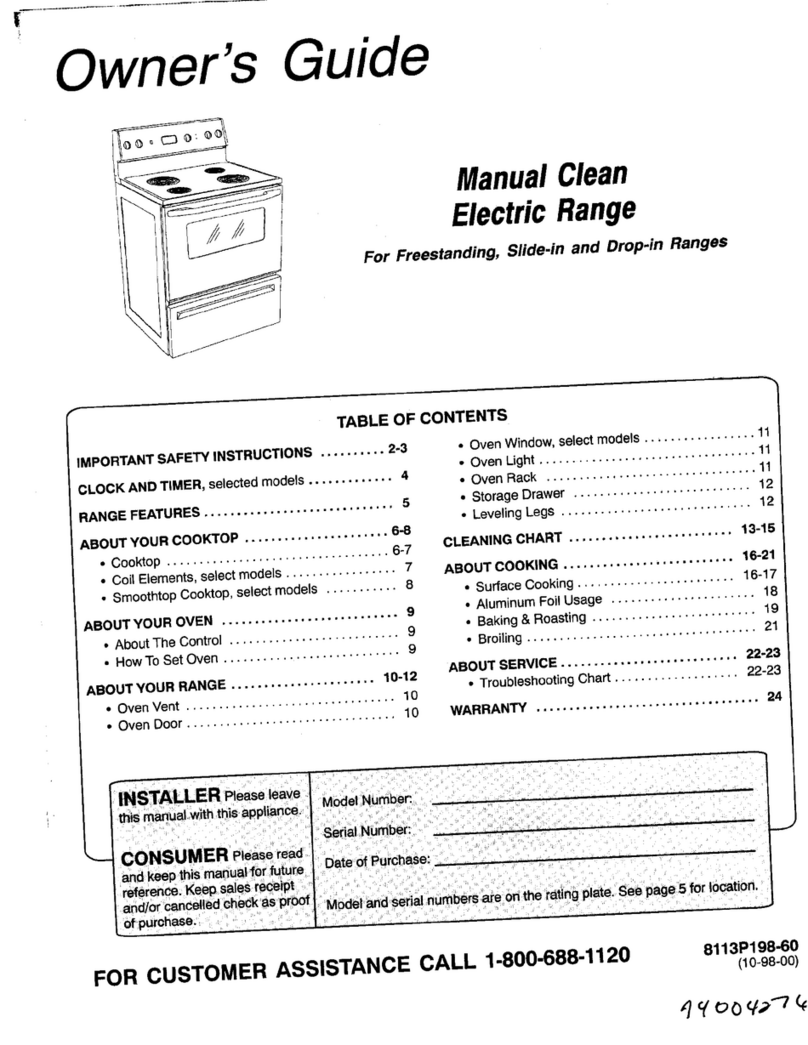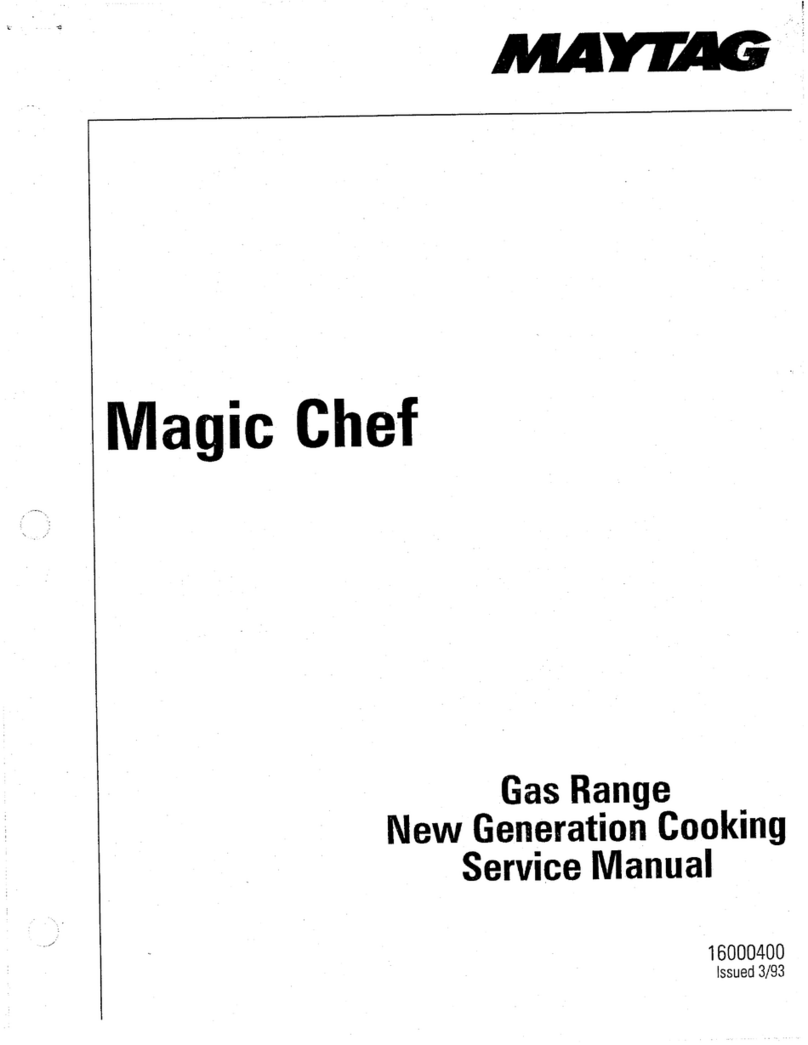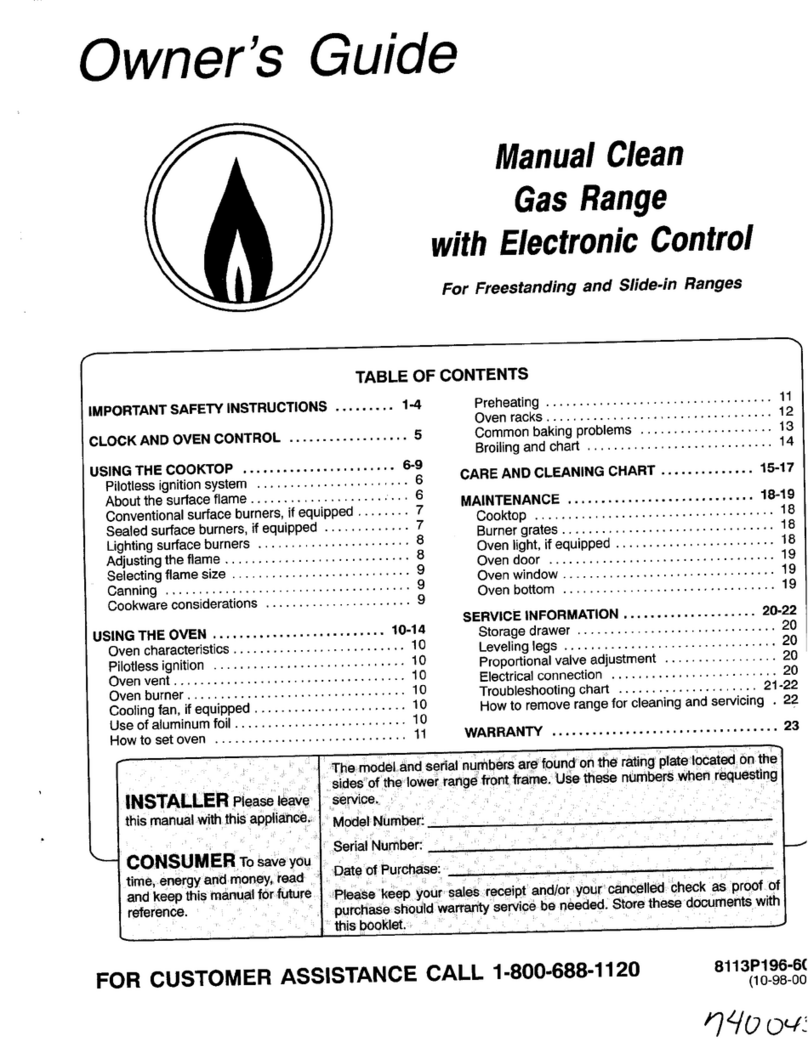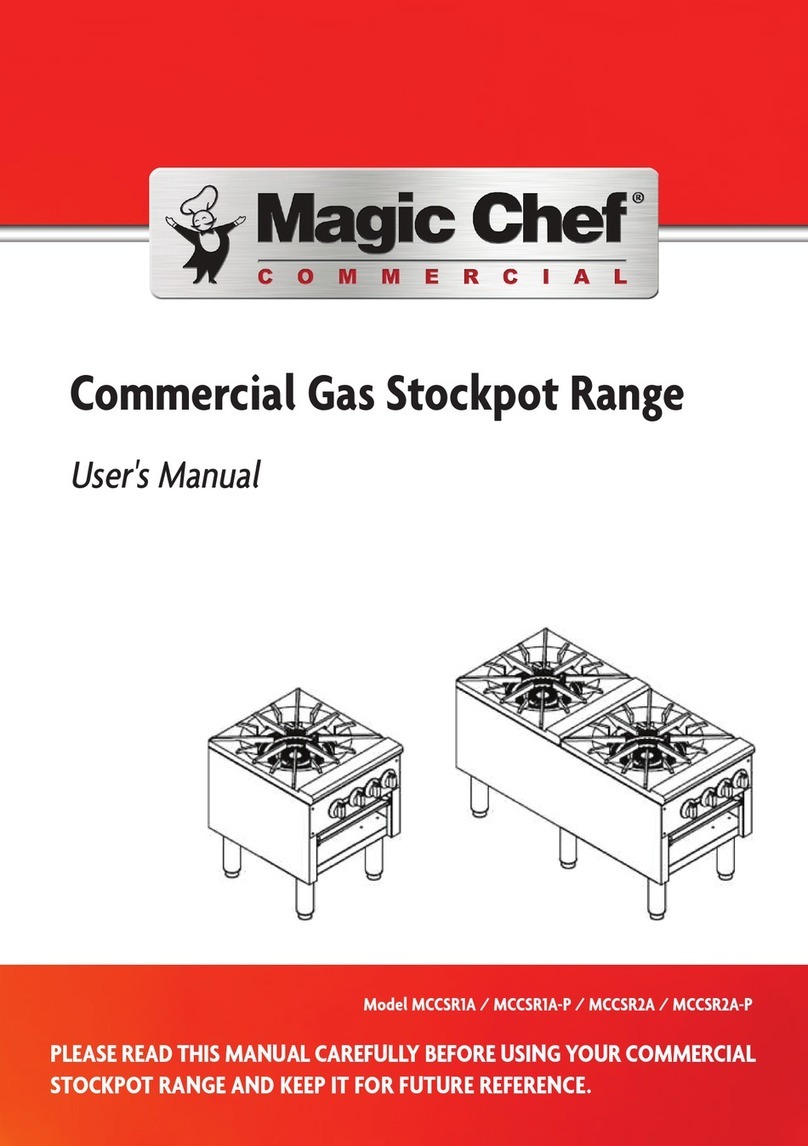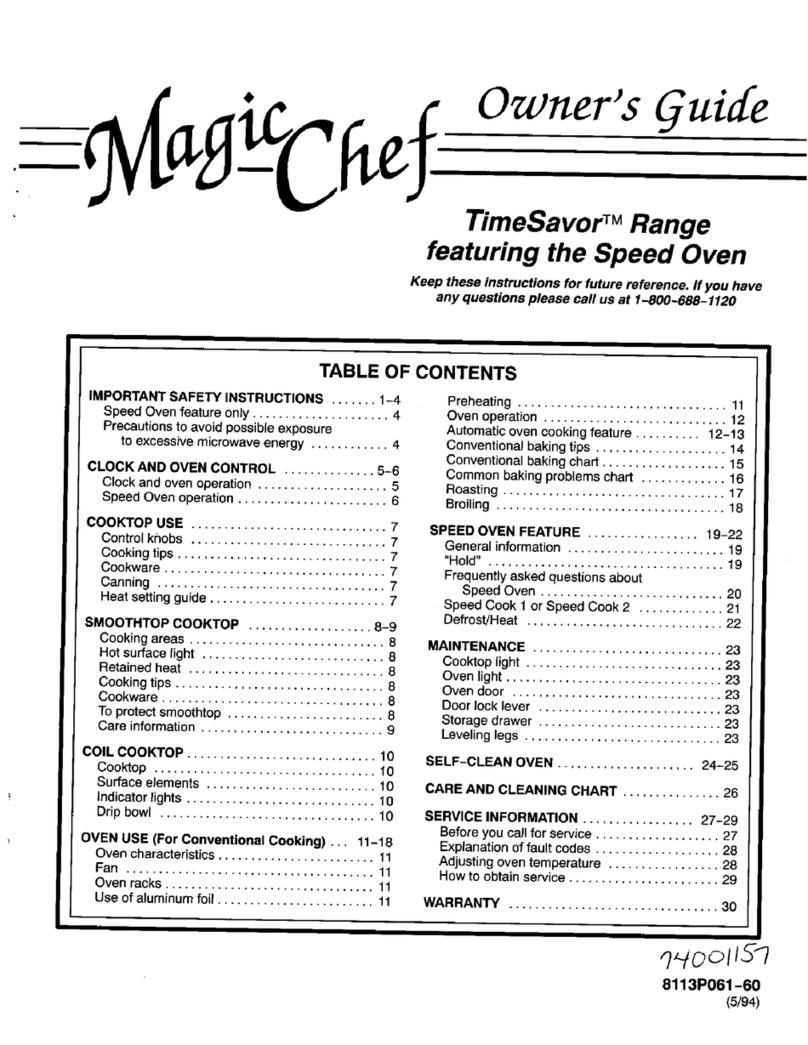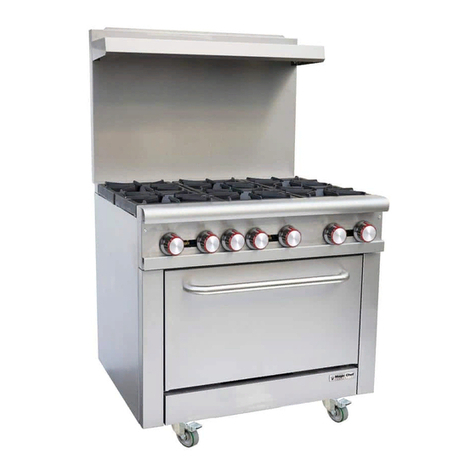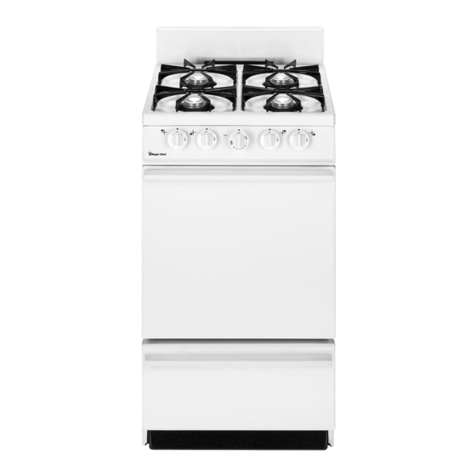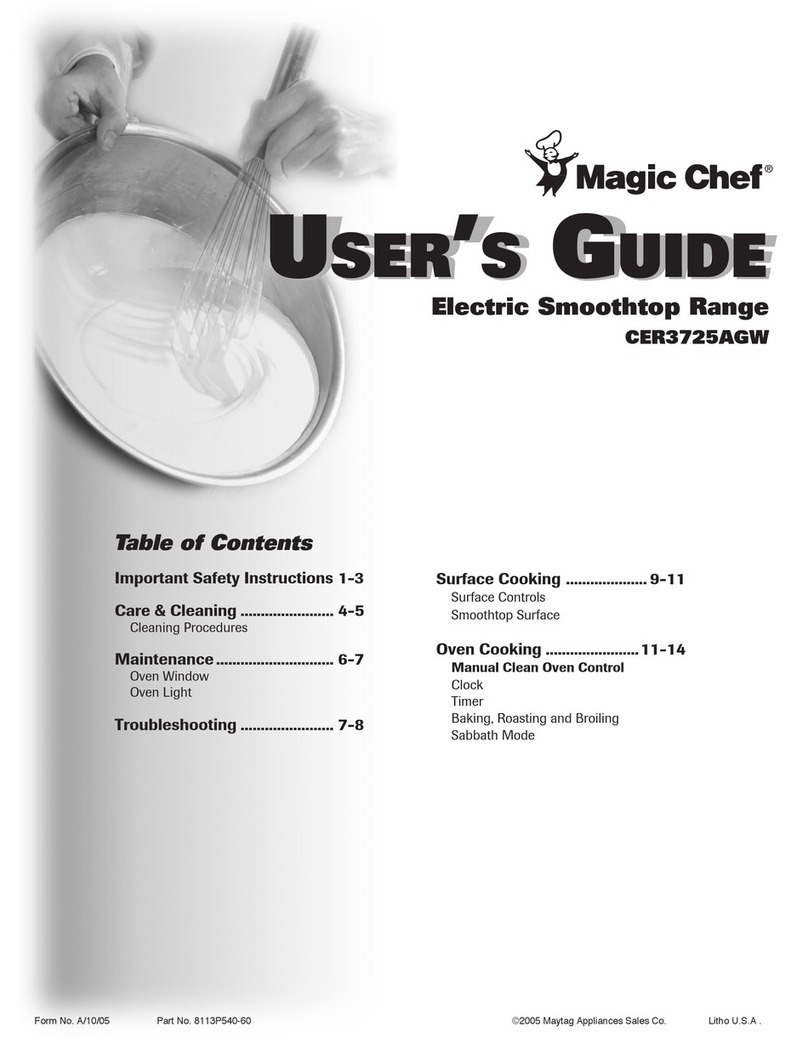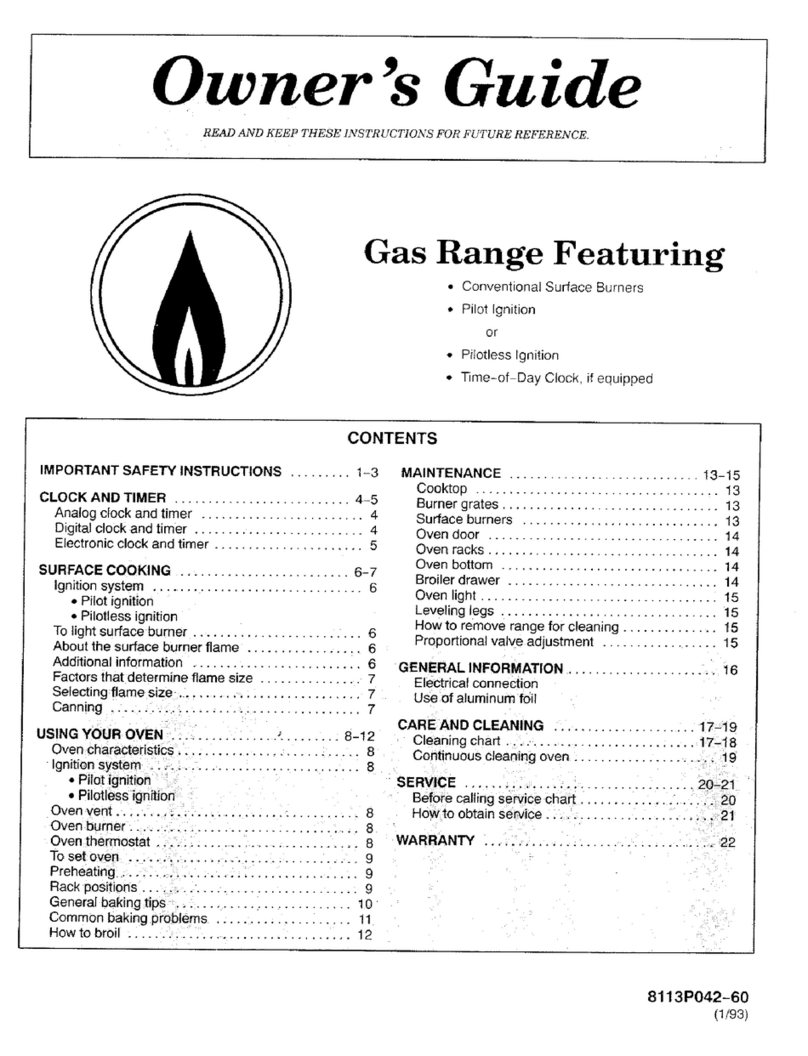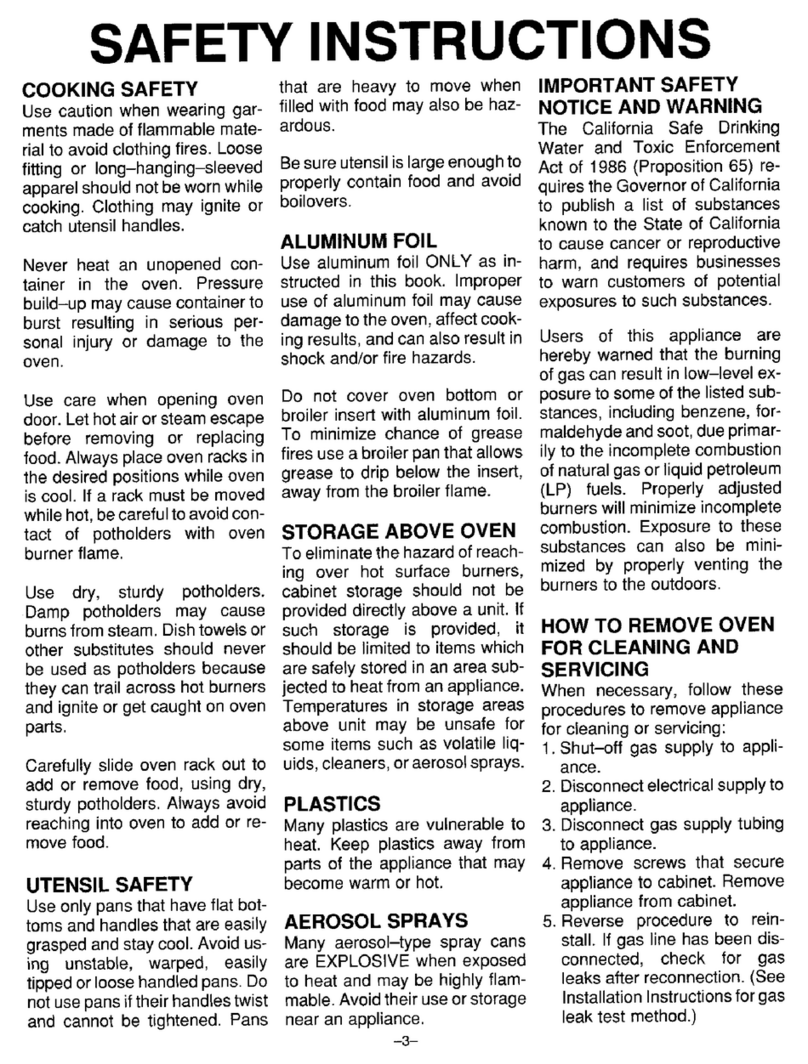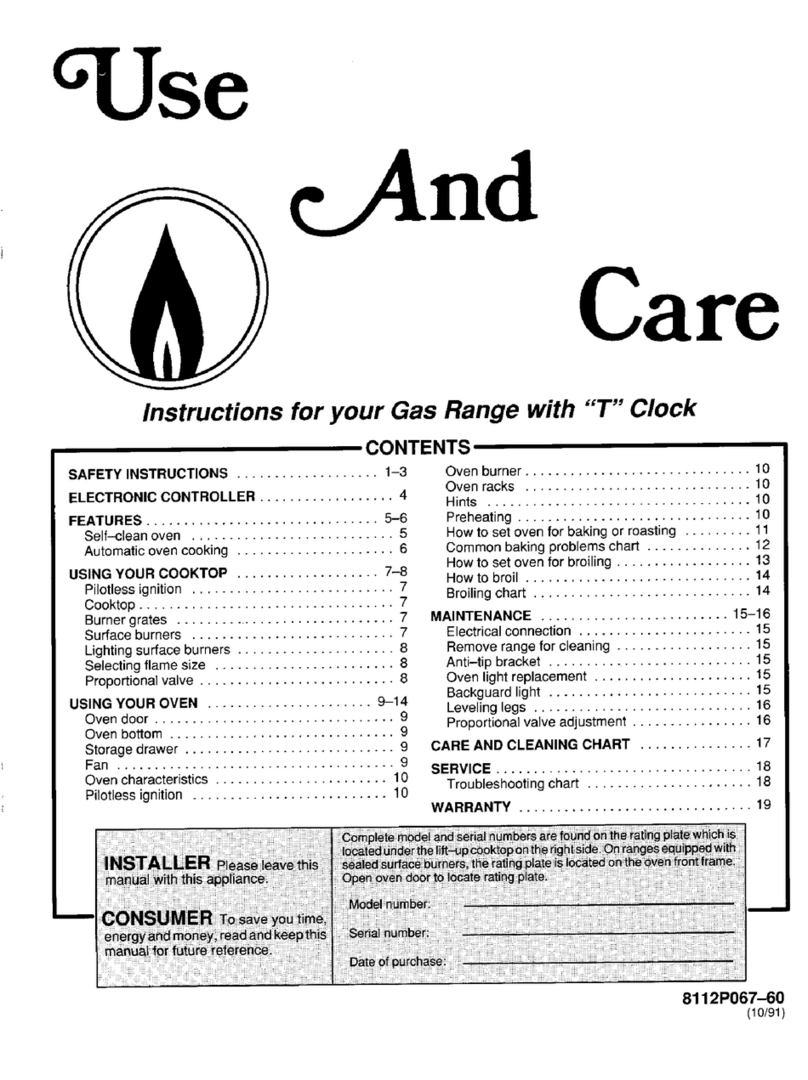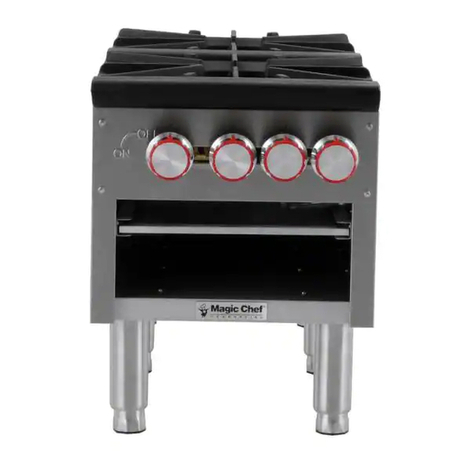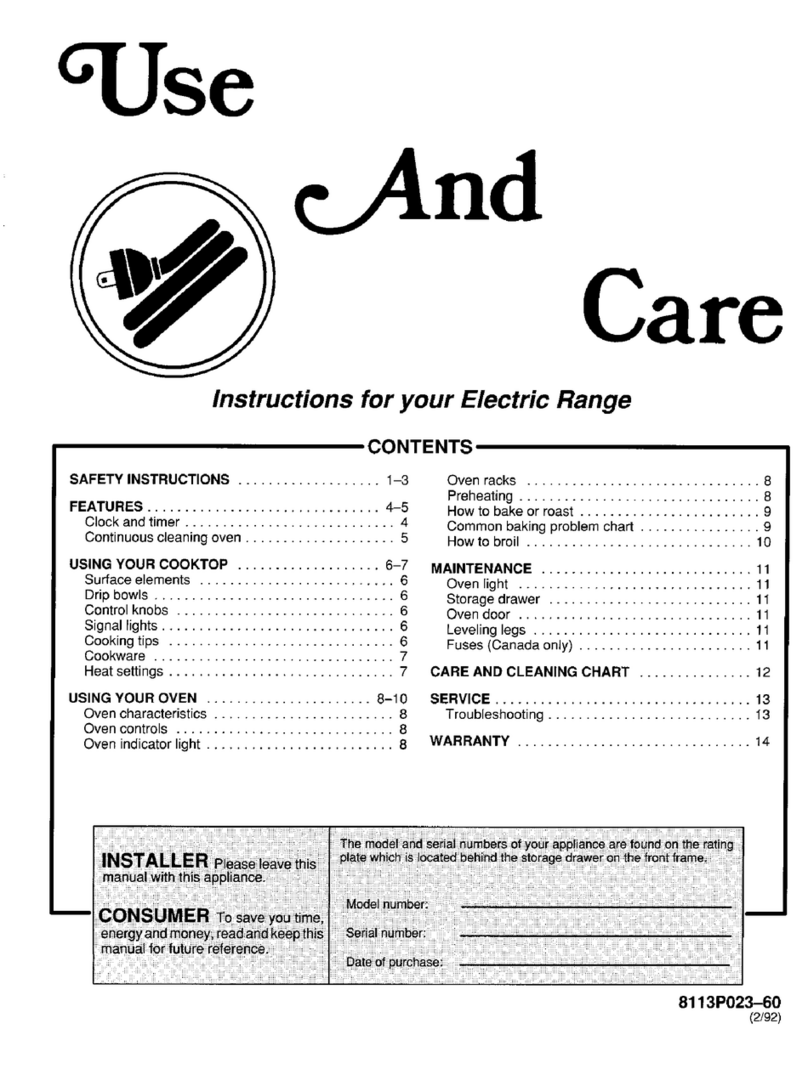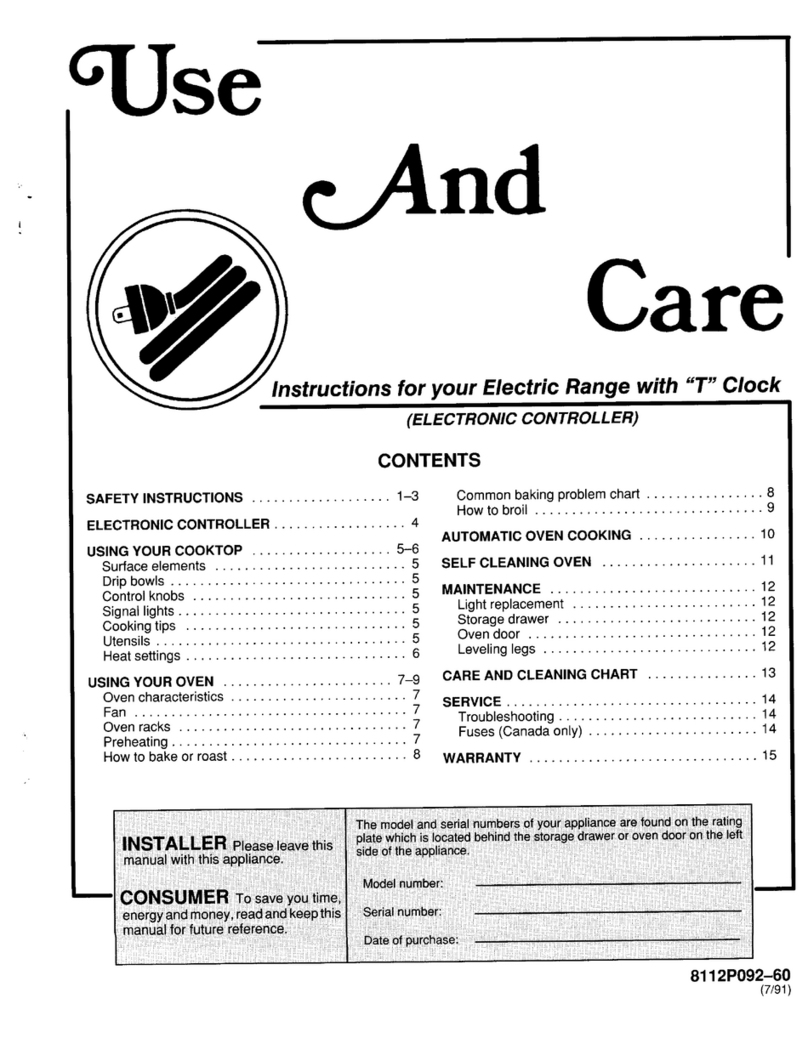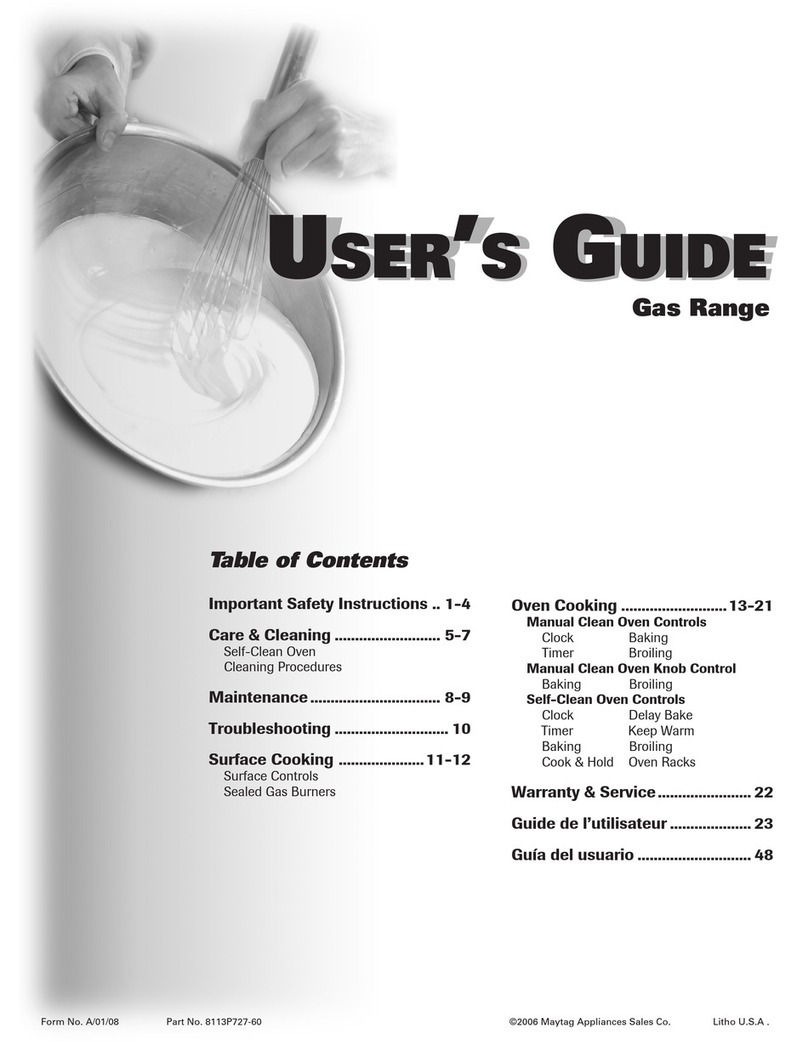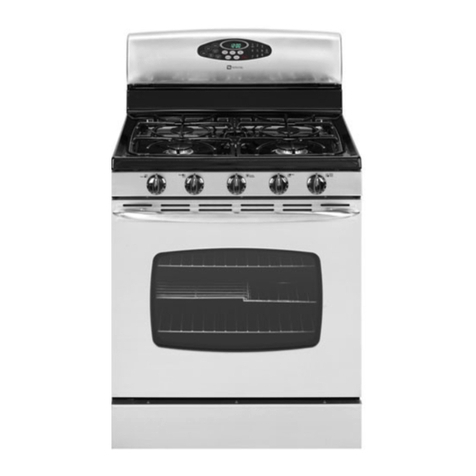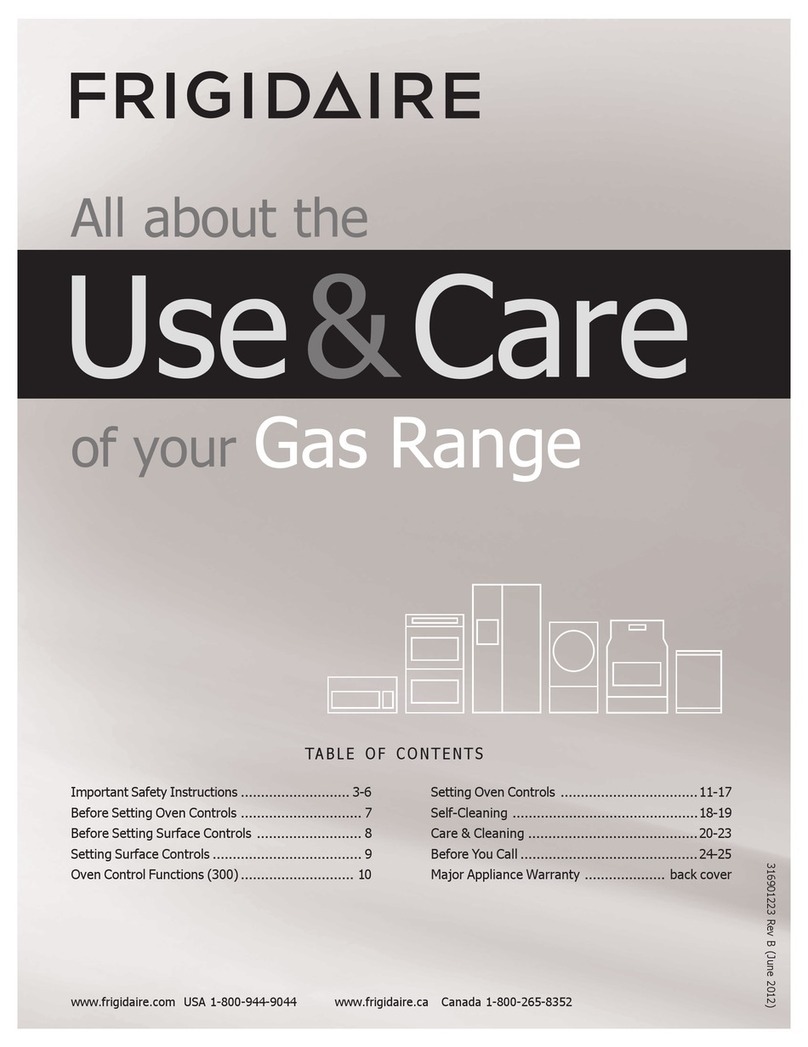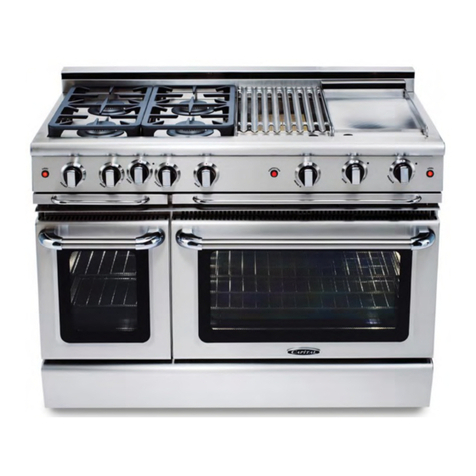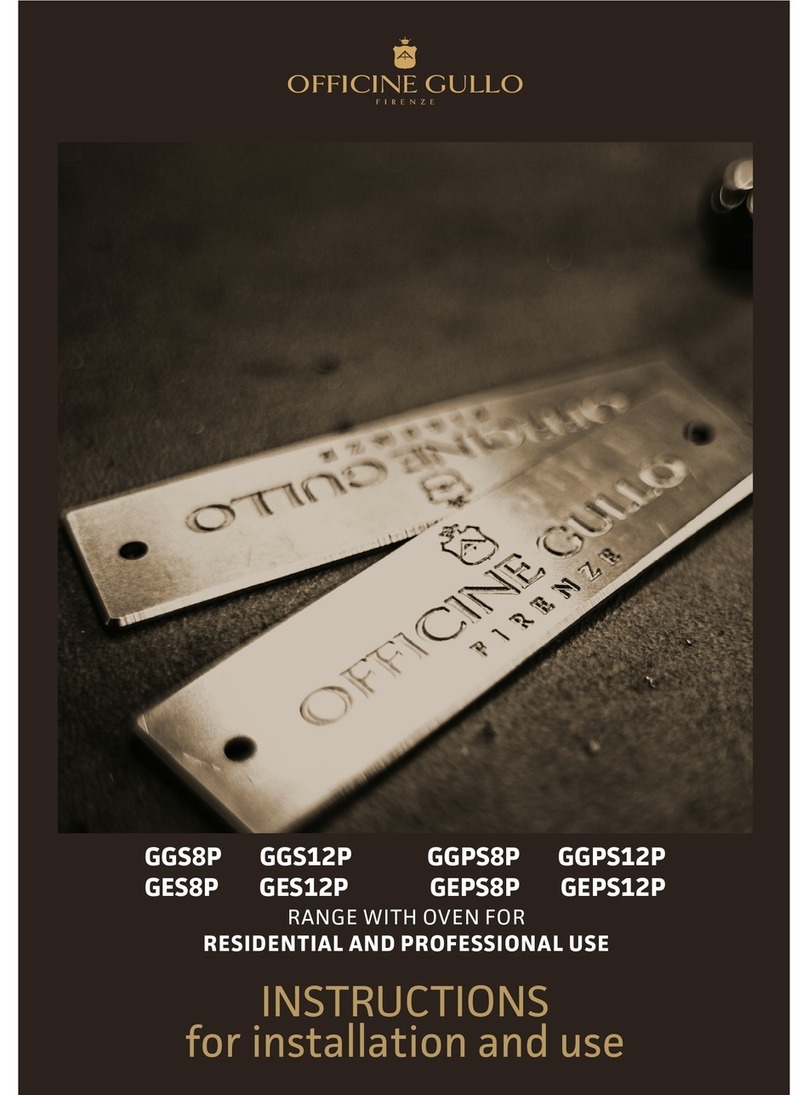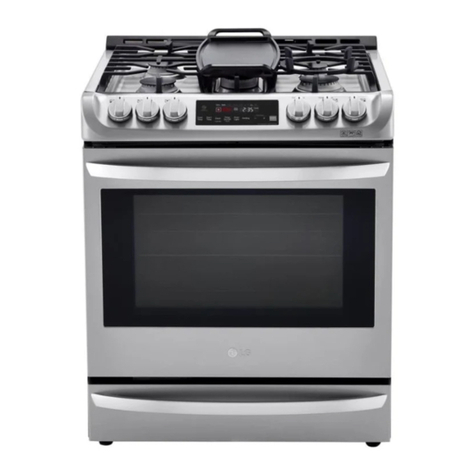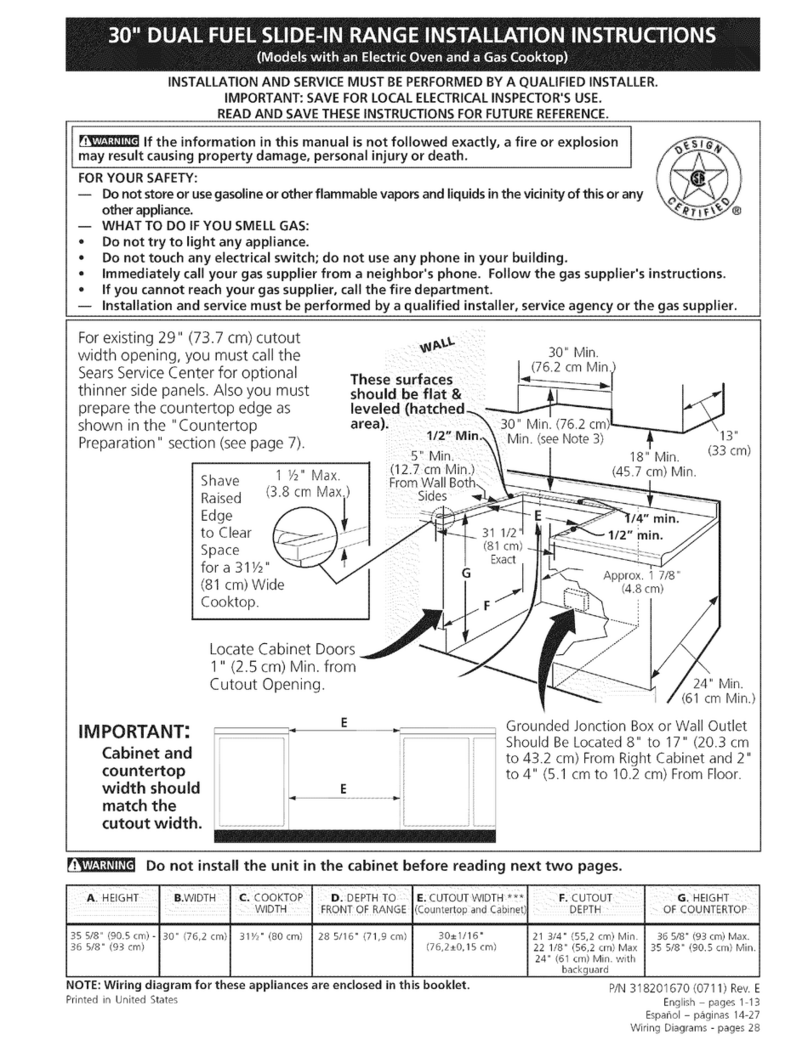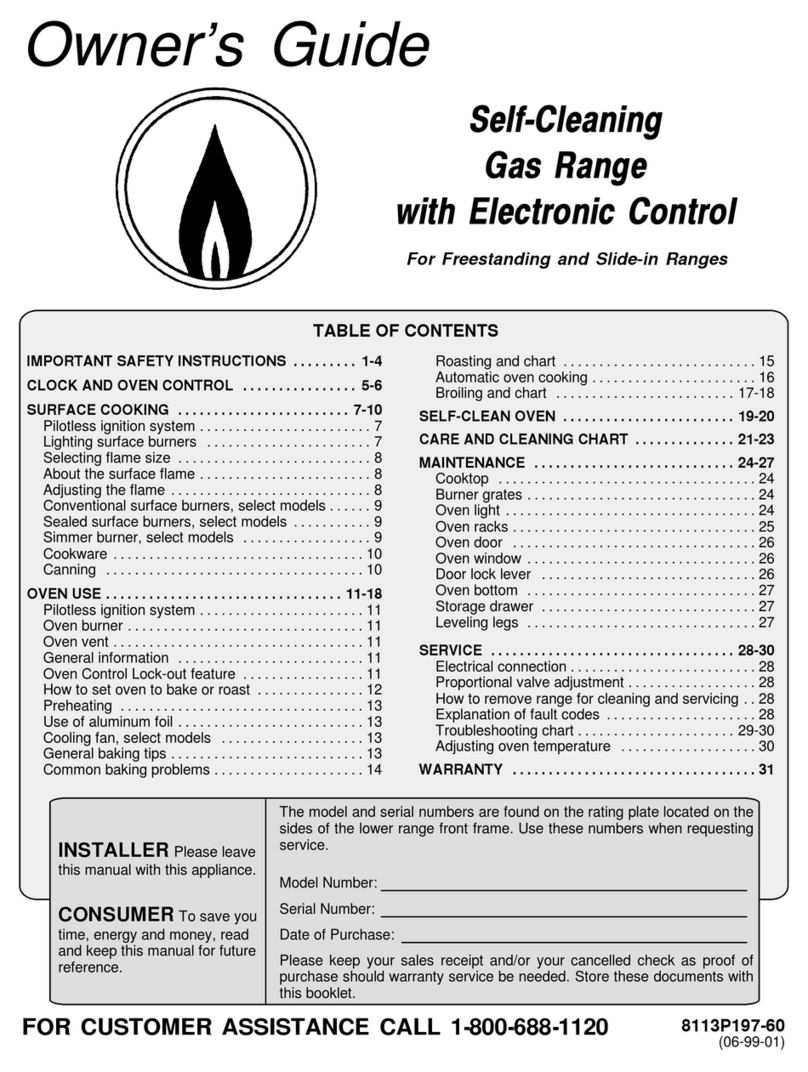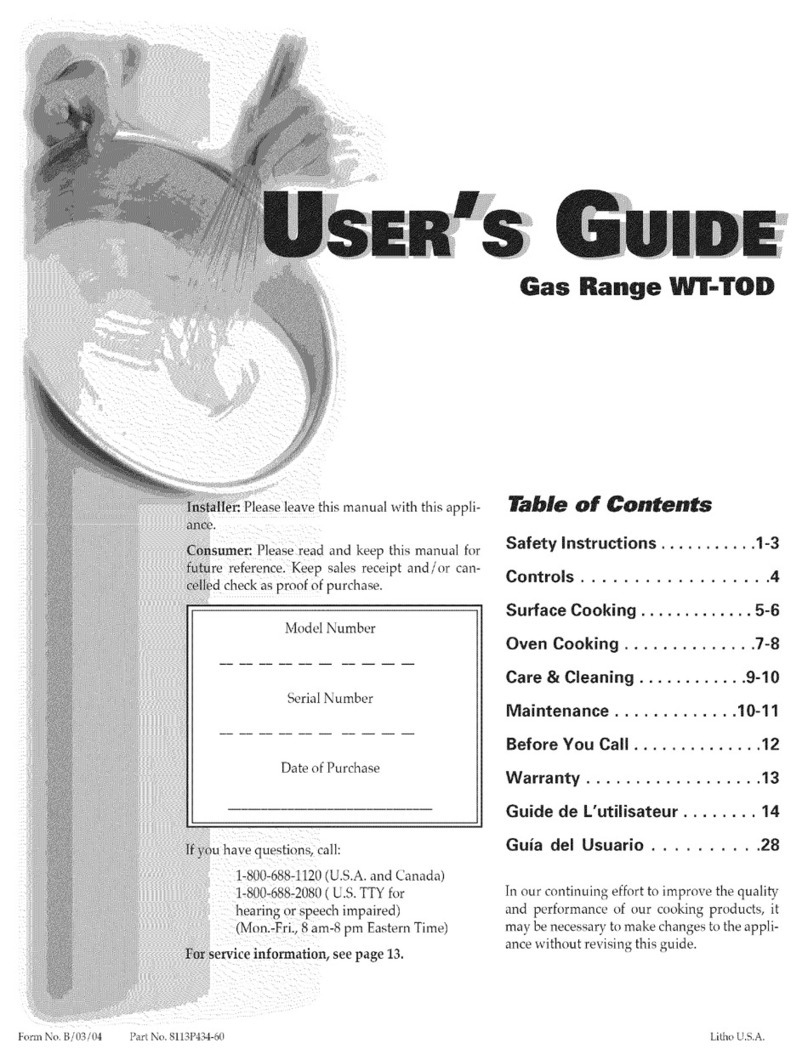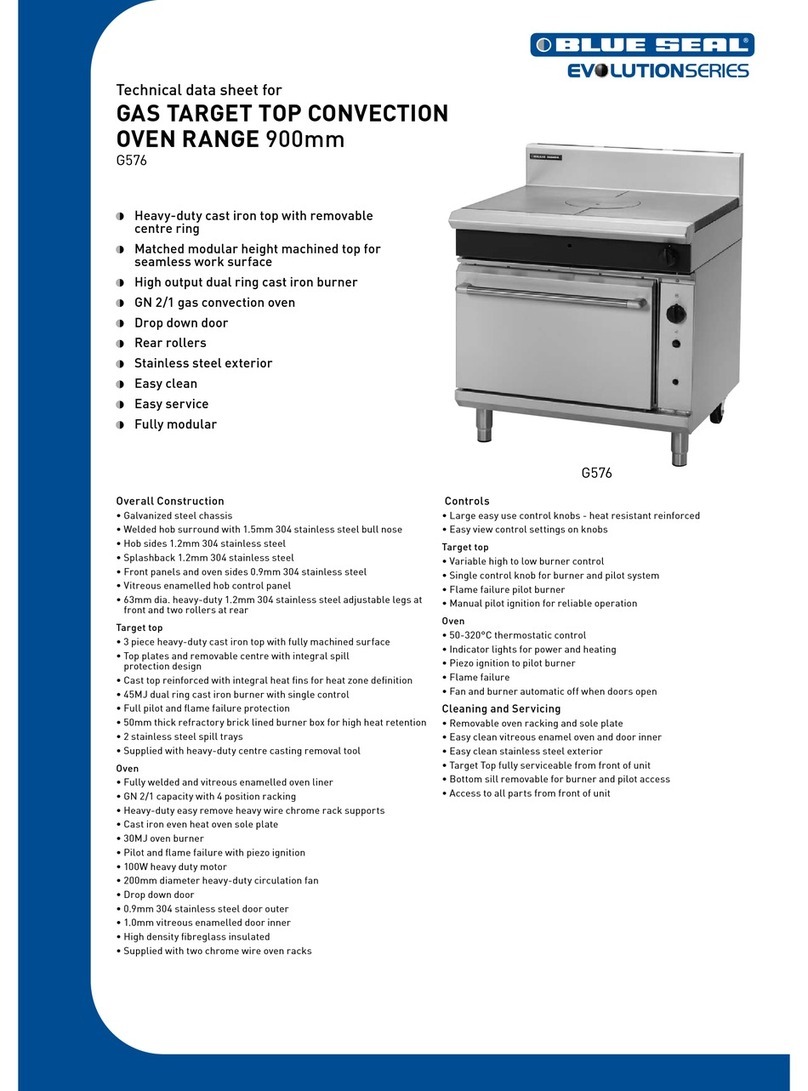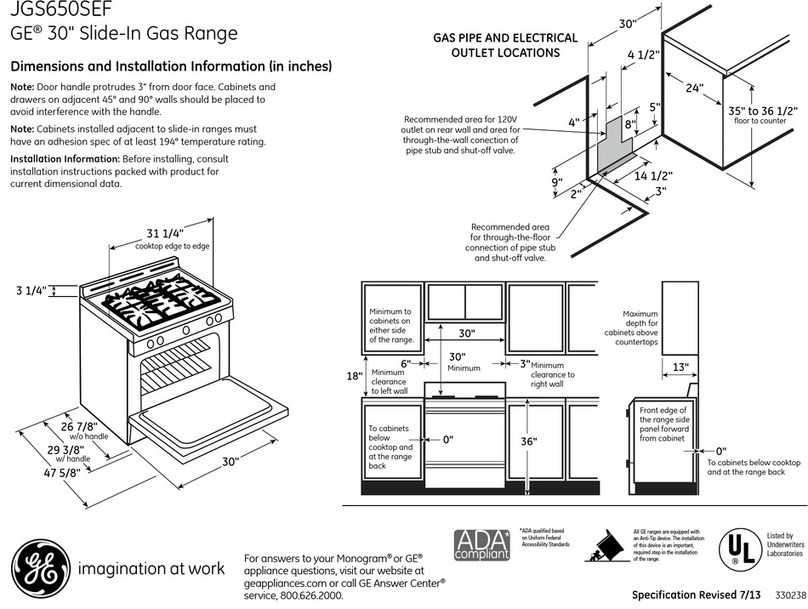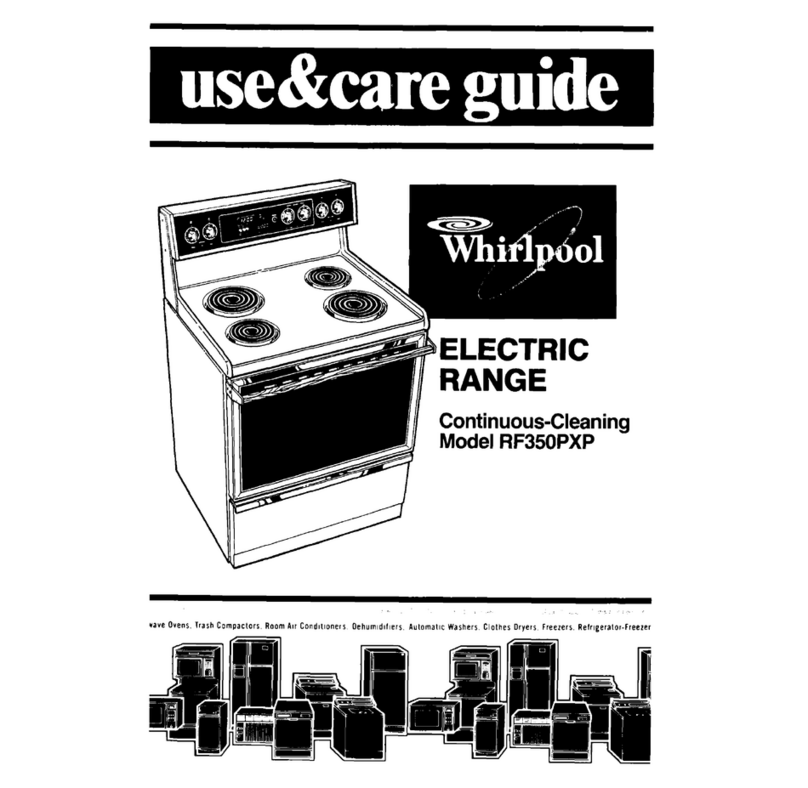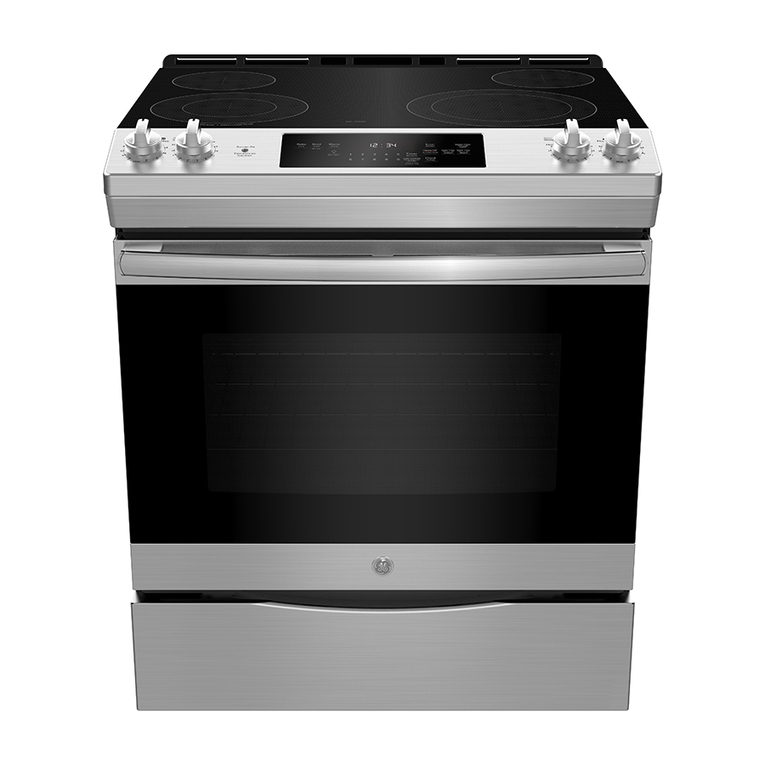SAFETY INSTRUCTIONS
GLAZED COOKING UTENSILS - Only certaintypesVENTILATINGHOODS:
ofglass, glass/ceramic, ceramic, earthenware, or CLEAN VENTILATINGHOODS FREQUENTLY -
otherglazedutensilsaresuitableforrange-topserv- Greaseshouldnotbeallowedto accumulateonhood
icewithoutbreakingduetothesuddenchangeintern- or filter.Whenflamingfoodsunderthehood,turnthe
perature, fanoff. Thefan, ifoperating,mayspreadtheflame.
IMPORTANT SAFETY NOTICE AND WARNING
UTENSIL HANDLES TheCaliforniaSafeDrinkingWaterandToxicEnforce-
_ _ SHOULD BE ment Actof 1986 (Proposition65) reqaires the GOver-
TURNED INWARD norof California to publisha list ofsubstances known
ANDNOT EXTENDto the State of Californiato cause canceror reproduc-
OVER ADJACENT tive harm,and requiresbusinessesto warncustomers
SURFACE UNITS - of potential exposures to such substances.
To reduce the risk of
burns, ignition of flam- Users of this appliance are hereby warned that when
mable materials, and the appliance isengaged in the self-clean cycle there
spillage due to unin- maybesome low-level exposureto someofthe listed
tentional contact withthe utensil,the handleof a uten- substances, including carbon monoxide. Exposure to
sil should bepositioned sothat itis turnedinward, and these substances can be minimizedby properly vent-
does not extend over adjacent surface elements, ingthe applianceto theoutdoors duringthe self-clean
cycle.
DO NOT SOAKREMOVABLEHEATING ELE-
MENTS - Heating elements should never be im- DEEP FAT FRYERS:
mersed in water. Immersing element inwater would Useextreme cautionwhen movingthe grease kettleor
damage insulating material inside element, disposing of hot grease.
DO NOT TOUCHSURFACE ELEMENTS OR OVEN
OVENS: ELEMENTS, AREAS NEAR ELEMENTSOR INTE-
USE CAREWHEN OPENING DOOR - Let hot air or RIORSURFACES OF OVEN - Elements may be hot
steam escape before removing or replacing food. even though theyare dark incolor. Areas nearsurface
elements and interior surfa_cesof oven may become
DO NOTHEATUNOPENED FOODCONTAINERS - hot enough to cause burns.During and after use, do
Build-up ofpressuremaycausecontainerto burstand not touch or let clothing or other flammable materials
contactheating elements, areas nearelements or in-
result in injury, terior surfaces of oven until they have had sufficient
timeto cool. Among theseareas arethe cocktop, sur-
KEEP OVEN VENT DUCTS(located under rear ele- faces facing the cooktop, oven vent opening and sur-
ment; rearcorner of cooktop; between oven door and faces nearthis opening, oven door, andovenwindow.
control panel of wall oven or on backguard) UNOB- Also, do not allow aluminum foil,meat probes or any
STRUCTED. Blockage of vent prevents proper oven other metal object, other than a utensil on a surface
air circulation and will affectoven performance.Avoid element, to contact heating elements.
touching ovenvent area while oven ison and for sev-
eral minutes afteroven isturned off. Some partsofthe ANTI-TIPBRACKET:
vent and surrounding area become hot enough to WARNING: To reduce the risk of tipping of the appli-
cause burns, ance from unusual usage or by excessive loading of
the oven door, the appliance must be secured by a
PLACEMENTOFOVEN RACKS--Alwaysplaceoven properly installedanti-tip device.Tocheck if device is
racks in desired location while oven is cool. If rack installed properly: Use a flashlight and look under-
mustbe movedwhile hot, usecare to avoid contact of neath rangeto see that one ofthe rearleveling legs is
potholder with oven erement, engagedinthe bracketslot.When removingappliance
for cleaning, be sure anti-tip device isengaged when
range isreplaced.Theanti-tip device securesthe rear
leveling legto the floor,when properly engaged.
-2-
